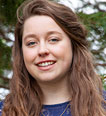
With the arrival of September, prevent-plant acres can now be harvested or grazed. Harvesting crops such as sorghum-sudangrass requires that attention be paid to whole-plant moisture since there is a high concentration of water in the plant at the time of harvest.
Bruce Anderson, a University of Nebraska-Lincoln extension forage specialist, explains in a recent article posted on Beefwatch that harvesting late-season sudangrass and sorghums can be a struggle.
Typically, prevent-plant acres are too wet to chop directly. Anderson suggests windrowing the forage, allowing it to wilt to the desired moisture levels, then using a pickup attachment to chop it. He also notes, “You can wait until the grain gets dry enough to balance the plant moisture if the hybrid you’re using is one that makes enough grain.” Waiting until a freeze occurs can also be an option because it will shut the plant down and reduce plant moisture.
Since September has short days and cooler temperatures, drying hay is difficult. Anderson suggests cutting the plant high to hold the windrows off the ground. “Spread the windrows wide to use as much sunlight as possible to dry the hay,” the specialist recommends. Crimp the stems to improve drying, then hope it doesn’t rain.
Anderson notes the best option for harvesting prevent-plant acres is baleage. Using plastic wrap on bales at 50 percent moisture levels saves a week of drying time and reduces weather risks.
The specialist notes that grazing prevent-plant acres is also challenging. If given free access, cattle will trample most forage, so while grazing is good for soil, it will cause large feed losses.
To reduce grazing losses, consider strip grazing pastures, allowing small portions of pasture availability at a time. Windrowing, paired with strip grazing, lessens the amount of wasted forage.
While crops such as green sudangrasses and sorghums can provide a good source of forage in years with bad planting seasons, they require a high level of moisture management.

Michaela King served as the 2019 Hay & Forage Grower summer editorial intern. She currently attends the University of Minnesota-Twin Cities and is majoring in professional journalism and photography. King grew up on a beef farm in Big Bend, Wis., where her 4-H experiences included showing both beef and dairy cattle.

